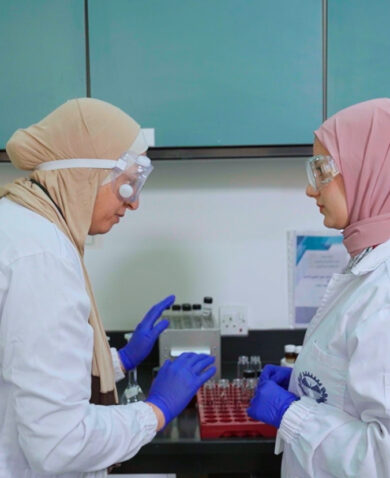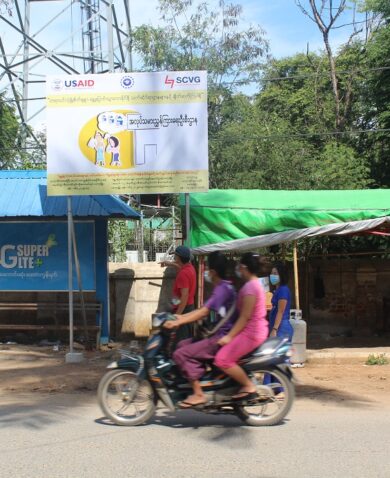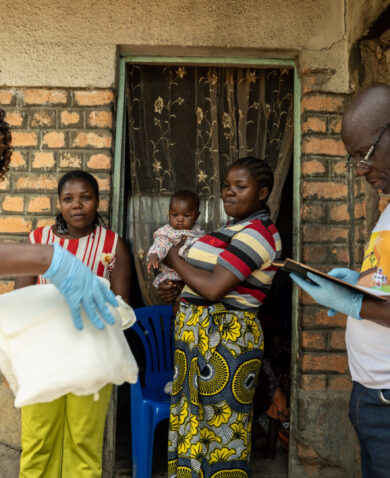
Know Your SDGs: Reducing Inequality as the Foundation for All Development Work
September 23, 2015 | 4 Minute ReadSocial inclusion, or the process of ensuring that everyone is able to participate in development, is the foundation of reducing inequality.
The other day I saw a homeless man here in Washington, D.C. with a sign that read: “I bet you a dollar that you won’t stop to read this sign.” The message stuck with me because to me it encapsulated what I see as a serious development challenge across the world—our tendency to not address inequality.
At the macro level, the fact that we’re not inclined to stop and respond to his sign is why the global community should not have been surprised at the Boko Haram kidnapping of 276 school girls. Nor should we be surprised by the severe challenges faced by the recent surges of refugees trying to make their way into the European Union (EU). But it’s also why international development work cannot and will not be successful unless the goal of reducing inequality within and among countries is at the forefront of everything we do.
Over the past few years, concepts around the importance of social inclusion and equitable development have been making their way to the forefront of international development work. Proposed Sustainable Development Goal (SDG) 10 explicitly addresses reducing inequality, but seven of the seventeen goals make reference to inclusion and equity because of the urgent need to include everyone in the development process. Social inclusion, or the process of ensuring that everyone is able to participate in development, is the foundation of reducing all forms of inequality.This isn’t just the latest do-gooder development fad—it reflects the reality that creating a more equal society actually leads to better development outcomes and greater stability. Here are four reasons why:
Reducing inequality helps prevent human rights abuses. At its core, there is a strong moral justification for reducing inequality. While the kidnapping of the 276 school girls in Nigeria was a horrific tragedy, the world shouldn’t have been surprised that it happened. It is estimated that every year between 12 and 24 million people are trafficked. Yet the international community was more outraged about the 276 girls then the cumulative millions who are exploited and abused every day. Why? Because the cumulative millions were exploited one by one. Because when inequality becomes so ingrained in our collective psyche, the disappearance and exploitation of one individual or a small group goes unnoticed. They are perceived as being less deserving to participate in and benefit from the social protections and rewards that development offers. Just as we justify not stopping for the homeless man, people also justify—sometimes subconsciously—who is more or less deserving of their basic social, economic and political rights. This sets us up to be blinded to the little ways that inequality chips away at development efforts.
Equality and inclusion are more than just the right thing to do. While addressing inequality is a moral issue, it’s also a business issue. The World Bank Group Report “Inclusion Matters: the Foundation for Shared Prosperity” drives home this point. The report estimated that the cost of inequality in Eastern Europe, with the economic exclusion of Roma from the formal market, created a loss of upwards 887 million euro per year in lost productivity. Similar studies by the World Bank on women’s economic involvement estimate that if women had equal access to agricultural resources, crop yields could increase by 20 to 30 percent. At the individual level, inequality, particularly the most exclusionary forms, presents significant lost opportunity costs for people who can’t participate in their society. When looking at the broader national effects of inequality countries also pay a higher price for those who have poor access to health services, who are less educated and who have restricted access to formal justice mechanisms.
Things are not the same for everyone. To promote equality, programs have to be designed with the concept of equity. Equity acknowledges that different social groups have different opportunities and different constraints to participate in development efforts. This has to be a data-driven process which looks at the numbers of who, how, when, where people are participating—not a qualitative analysis that makes presumptions about access and benefit. By identifying the actual gaps, program designers can then use the six-domain framework to figure out why there are gaps and how to address them.
Gender matters, but so do other factors. Gender is often at the forefront of conversations about equality. Groups of women and men make up the populations of every country in the world and women tend to make less money, own less property, receive less education, and make fewer decisions about their lives. But not all women are equal in the constraints they face. Similarly, sometimes identity factors such as ethnicity can play a much more significant role than gender in determining who is included and who is excluded. For example, findings from the World Bank study noted above revealed that while gender is important, ethnic identity plays a large role in unequal literacy rates.
At its core, development is about people. To do it well, all of us in the global development community must work harder to ensure that it is accessible to and inclusive of all people. Having these values included in the SDGs is a step in the right direction, but it is our actions that will ultimately determine whether we can reduce inequality.
Curious about the SDGs and post-2015 development agenda? Watch this space. “Know Your SDGs” is a recurring weekly blog series digging into the goals in the lead-up to this week’s United Nations General Assembly and post-2015 development summit.




































